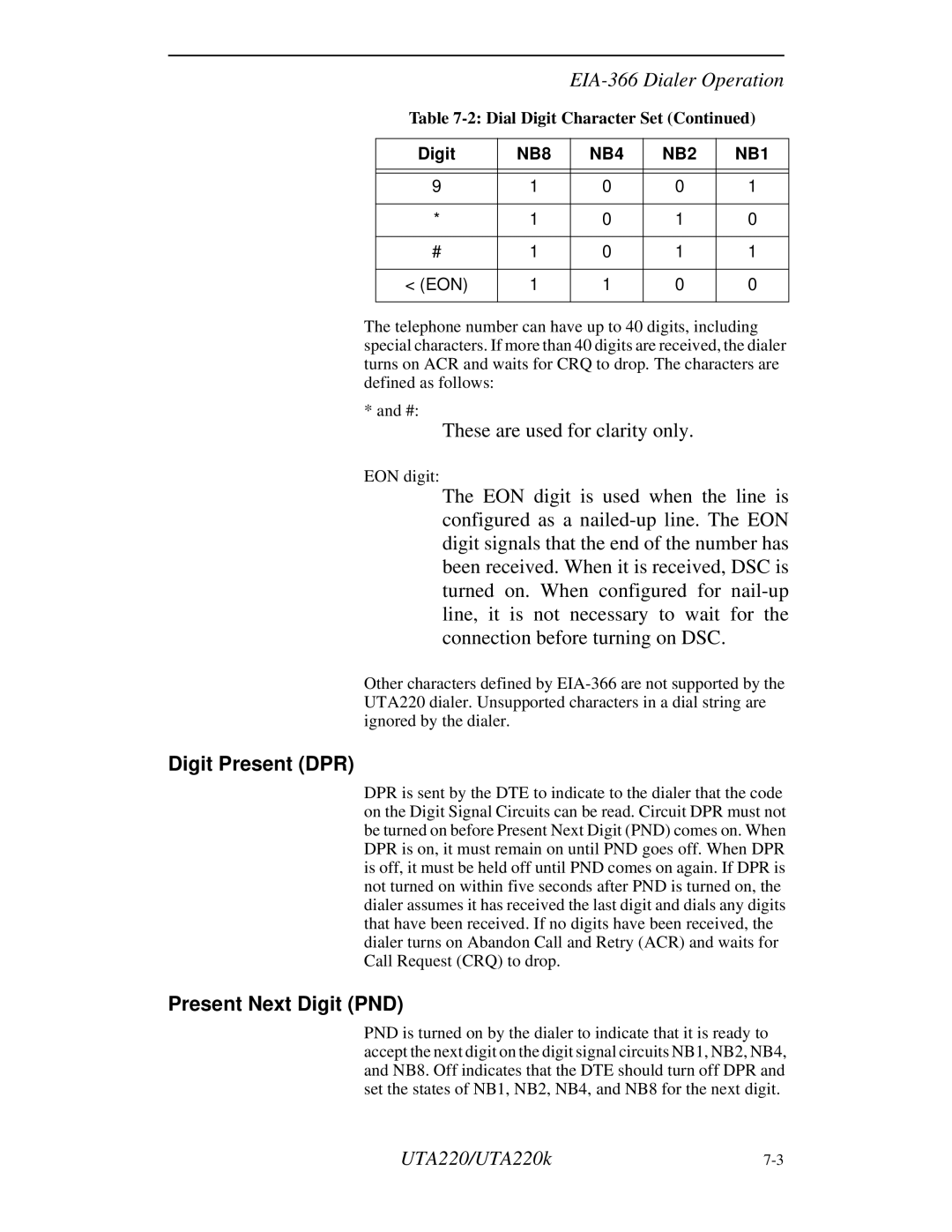Table
Digit | NB8 | NB4 | NB2 | NB1 |
|
|
|
|
|
|
|
|
|
|
9 | 1 | 0 | 0 | 1 |
|
|
|
|
|
* | 1 | 0 | 1 | 0 |
|
|
|
|
|
# | 1 | 0 | 1 | 1 |
|
|
|
|
|
< (EON) | 1 | 1 | 0 | 0 |
|
|
|
|
|
The telephone number can have up to 40 digits, including special characters. If more than 40 digits are received, the dialer turns on ACR and waits for CRQ to drop. The characters are defined as follows:
* and #:
These are used for clarity only.
EON digit:
The EON digit is used when the line is configured as a
Other characters defined by
Digit Present (DPR)
DPR is sent by the DTE to indicate to the dialer that the code on the Digit Signal Circuits can be read. Circuit DPR must not be turned on before Present Next Digit (PND) comes on. When DPR is on, it must remain on until PND goes off. When DPR is off, it must be held off until PND comes on again. If DPR is not turned on within five seconds after PND is turned on, the dialer assumes it has received the last digit and dials any digits that have been received. If no digits have been received, the dialer turns on Abandon Call and Retry (ACR) and waits for Call Request (CRQ) to drop.
Present Next Digit (PND)
PND is turned on by the dialer to indicate that it is ready to accept the next digit on the digit signal circuits NB1, NB2, NB4, and NB8. Off indicates that the DTE should turn off DPR and set the states of NB1, NB2, NB4, and NB8 for the next digit.
UTA220/UTA220k |
